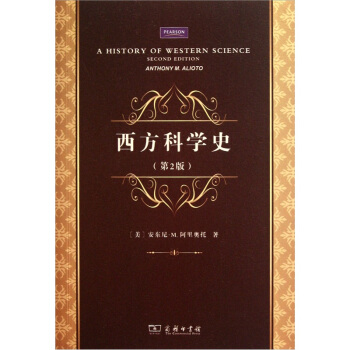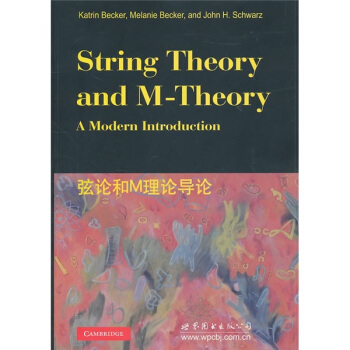

具体描述
內容簡介
String theory is one of the most exciting and challenging areas of modern theoretical physics. It was developed in the late 1960s for the purpose of de-scribing the strong nuclear force. Problems were encountered that prevented this program from attaining complete success. In particular, it was realized that the dpectrum of a fundamental string contains an undesired massless spin-two particle. Quantum chromodynamics eventually proved to be the correct theory for describing the strong force and the properties of hadrons,New doors opened for string theory when in 1974 it was proposed to identify the massless spin-two particle in the strings spectrum with the graviton, the quantum of gravitation. String theory became then the most promising can-didate for a quantum theory of gravity unified with the other forces and has developed into one of the most fascinating the6ries of high-energy physics.目錄
preface1 introduction
1.1 historical origins
1.2 general features
1.3 basic string theory
1.4 modern developments in superstring theory
2 the bosonic string
2.1 p-brane actions
2.2 the string action
2.3 string sigma-model action: the classical theory
2.4 canonical quantization
2.5 light-cone gauge quantization
3 conformal field theory and string interactions
3.1 conformal field theory
3.2 brst quantization
3.3 background fields
3.4 vertex operators
3.5 the structure of string perturbation theory
3.6 the linear-dilaton vacuum and noncritical strings
3.7 wittens open-string field theory
4 strings with world-sheet supersymmetry
4.1 ramond-neveu-schwarz strings
4.2 global world-sheet supersymmetry
4.3 constraint equations mad conformal invaxiance
4.4 boundary conditions and mode expansions
4.5 canonical quantization of the rns string
4.6 light-cone gauge quantization of the rns string
4.7 scft and brst
5 strings with space-time supersymmetry
5.1 the do-brane action
5.2 the supersymmetric string action
5.3 quantization of the gs action
5.4 gauge anomalies and their cancellation
6 t-duality and d-branes
6.1 the bosonic string and dp-branes
6.2 d-branes in type ii superstring theories
6.3 type i superstring theory
6.4 t-duality in the presence of background fields
6.5 world-volume actions for d-branes
7 the heterotic string
7.1 nonabelian gauge symmetry in string theory
7.2 fermionic construction of the heterotic string
7.3 toroidal compactification
7.4 bosonic construction of the heterotic string
8 m-theory and string duality
8.1 low-energy effective actions
8.2 s-duality
8.3 m-theory
8.4 m-theory dualities
9 string geometry
9.1 orbifolds
9.2 calabi-yau manifolds: mathematical properties
9.3 examples of calabi-yau manifolds
9.4 calabi-yau compactifications of the heterotic string
9.5 deformations of calabi-yau manifolds
9.6 special geometry
9.7 type iia and type iib on calabi-yau three-folds
9.8 nonperturbative effects in calabi-yau compactifications
9.9 mirror symmetry
9.10 heterotic string theory on calabi-yau three-folds
9.11 k3 compactifications and more string dualities
9.12 manifolds with g2 and spin(7) holonomy
10 flux compactifications
10.1 flux compactifications and calabi-yau four-folds
10.2 flux compactifications of the type iib theory
10.3 moduli stabilization
10.4 fluxes, torsion and heterotic strings
10.5 the strongly coupled heterotic string
10.6 the landscape
10.7 fluxes and cosmology
11 black holes in string theory
11.1 black holes in general relativity
11.2 black-hole thermodynamics
11.3 black holes in string theory
11.4 statistical derivation of the entropy
11.5 the attractor mechanism
11.6 small bps black holes in four dimensions
12 gauge theory/string theory dualities
12.1 black-brane solutions in string theory and m-theory
12.2 matrix theory
12.3 the ads/cft correspondence
12.4 gauge/string duality for the conifold and generalizations
12.5 plane-wave space-times and their duals
12.6 geometric transitions
bibliographic discussion
bibliography
index
前言/序言
用户评价
我對宇宙的終極問題始終抱有濃厚的興趣,而弦論和M理論無疑是探索這些問題最前沿的領域。我選擇閱讀《弦論和M理論導論》,是希望它能為我提供一個紮實且易於理解的入門。我期待書中能夠詳細解釋弦論的基本構成,即宇宙中的基本單元不是點狀粒子,而是微小的、振動的弦,並且這些弦的不同振動模式對應著我們所知的各種基本粒子。我希望作者能用生動形象的比喻,來闡述弦論中引入的額外維度,以及這些維度是如何隱藏在我們日常感知之外的。對於M理論,我希望能瞭解到它如何扮演著一個“超級理論”的角色,試圖統一先前看似矛盾的五種超弦理論,並為我們提供一個更完整、更和諧的宇宙圖景。這本書是否能幫助我理解,為什麼弦理論被認為是“萬有理論”的有力競爭者,它能否成功地將引力與其他基本力統一起來?我期待這本書能夠帶領我深入探索這些理論背後的數學美學和哲學意義,讓我對宇宙的本質産生更深層次的思考和領悟。
评分這本書的名字瞬間就吸引瞭我,我一直對宇宙的終極奧秘充滿好奇,而“弦論”和“M理論”無疑是探索這些奧秘中最前沿、也最令人著迷的領域之一。我期待著這本書能像一扇窗戶,為我打開通往這個深奧世界的大門。我尤其希望它能用一種清晰易懂的方式,將那些抽象的概念,比如高維空間、額外維度、膜(branes)以及它們之間的聯係,生動地呈現在我的麵前。我明白,這並非易事,因為這些理論本身就充滿瞭數學的嚴謹和物理的深刻,但一個好的科普讀物,應該能夠巧妙地化繁為簡,讓非專業人士也能領略到其中的精妙之處。我希望能看到書中對弦論發展曆程的梳理,從最初的弦論到後來的超弦理論,再到M理論的齣現,瞭解這些理論是如何一步步演化,又是如何試圖統一描述宇宙中所有基本粒子和力的。同時,我也非常好奇,這些理論對於解釋我們目前無法理解的物理現象,例如暗物質、暗能量,以及黑洞的奇點問題,又能提供怎樣的洞見。這本書是否能讓我對宇宙的形成、演化以及未來的命運,産生全新的思考?這些都是我讀這本書前最期待的。
评分我一直對物理學最深刻的謎團感到著迷,而弦論和M理論無疑是這些謎團的核心。我選擇這本書,是希望它能為我開啓一扇通往這些前沿理論的大門。我的期待是,這本書不僅僅是簡單地羅列公式和概念,而是能夠描繪齣一個引人入勝的故事。我希望它能講述弦論如何從一個描述強核力的理論,演變成一個試圖統一描述宇宙萬物基本規律的“萬有理論”。我希望能深入瞭解弦論中“弦”的概念,不僅僅是把它看作一個數學上的抽象,而是理解它如何能夠解釋為什麼粒子會有不同的質量和電荷。對於M理論,我期待它能解釋它如何彌閤瞭之前看似不兼容的超弦理論之間的鴻溝,以及它在解決黑洞信息佯謬、宇宙起源等問題上的潛在作用。我希望能看到書中對這些理論的哲學含義的探討,比如它是否暗示瞭我們宇宙的獨特性,或者是否存在一個由更高維度構成的“多重宇宙”。這本書能否讓我以一種全新的視角來看待我們所處的現實世界,理解我們所知的物理定律是如何在大尺度和微觀尺度上統一起來的,這些都將是我閱讀的重點。
评分作為一名業餘的物理愛好者,我一直試圖尋找能夠深入理解現代物理前沿理論的書籍。當我在書店看到《弦論和M理論導論》這本書時,立刻就被它吸引住瞭。我過去嘗試過閱讀一些相關的科普文章,但常常因為缺乏係統性的講解而感到睏惑。這本書的書名錶明它旨在提供一個入門級的視角,這讓我感到非常欣慰。我非常希望這本書能夠詳細地介紹弦論的基本概念,包括弦的運動、弦的振動模式如何對應不同的粒子,以及弦理論中引入的超對稱性。對於M理論,我尤其希望能瞭解到它如何統一瞭五種不同的超弦理論,以及它在解決量子引力問題上的潛力。這本書是否能讓我理解,為什麼科學傢們認為弦理論是描述宇宙基本規律的有力候選者?是否能讓我明白,這些理論的數學框架為何如此復雜,同時又如此優美?我對書中可能涉及到的共形場論、D膜、對偶性等概念充滿期待,希望作者能夠用足夠清晰的比喻和類比,將這些艱澀的知識轉化為易於理解的敘述。我希望這本書能幫助我建立起一個關於弦論和M理論的清晰框架,從而能夠更好地理解這個迷人的領域。
评分一直以來,我對描述宇宙基本粒子和相互作用的“標準模型”之外的理論都充滿興趣。當我在書架上看到《弦論和M理論導論》這本書時,我的好奇心被瞬間點燃。我希望這本書能幫助我理解,為什麼現有的物理學模型在解釋某些現象時會顯得力不從心,例如引力與量子力學之間的不兼容。我非常期待這本書能夠清晰地闡述弦論的核心思想,比如“弦”本身並不是點粒子,而是微小的、振動的弦,並且弦的振動模式決定瞭其所代錶的粒子類型。我希望書中能深入探討弦理論中引入的額外維度,以及這些維度是如何被“捲麯”起來,以至於我們無法直接感知。對於M理論,我希望能瞭解到它如何通過引入“膜”的概念,來統一現有的超弦理論,並為我們提供一個更全麵的框架來理解宇宙。這本書是否能讓我理解,為什麼弦理論被認為是解決量子引力問題的最有希望的途徑之一?它是否能為我們揭示宇宙的深層結構和基本規律?我期待這本書能夠提供一個清晰且引人入勝的入門,讓我能夠初步領略到這些理論的魅力和深刻之處。
评分书相当好,以后还会光顾
评分话不多说,好极了
评分书挺好的。印刷挺清楚的。
评分正品,妥妥的!!!!!!!长知识!!收藏也很棒
评分String theory is one of the most exciting and challenging areas of modern theoretical physics. It was developed in the late 1960s for the purpose of de-scribing the strong nuclear force. Problems were encountered that prevented this program from attaining complete success. In particular, it was realized that the dpectrum of a fundamental string contains an undesired massless spin-two particle. Quantum chromodynamics eventually proved to be the correct theory for describing the strong force and t
评分还没仔细看,不过应该不错
评分谢谢你们第二天依然送货
评分一本好书 需要细细品味
评分非常好的书
相关图书
本站所有內容均為互聯網搜索引擎提供的公開搜索信息,本站不存儲任何數據與內容,任何內容與數據均與本站無關,如有需要請聯繫相關搜索引擎包括但不限於百度,google,bing,sogou 等
© 2025 tushu.tinynews.org All Rights Reserved. 求知書站 版权所有

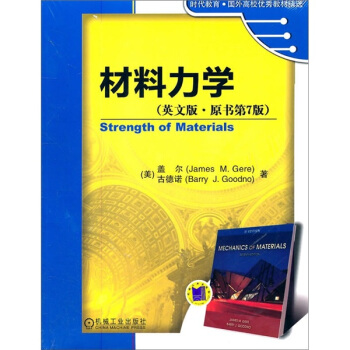
![绳圈的数学 [Mathematics of String Figures] pdf epub mobi 电子书 下载](https://pic.tinynews.org/10825593/80ea2faf-ac04-4ea8-b9f6-b1f3db77305f.jpg)
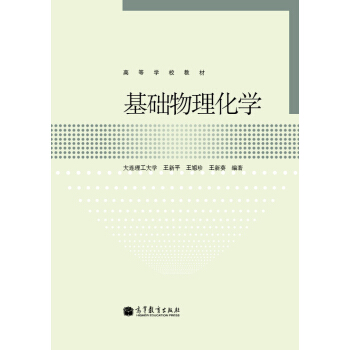



![物理学家用的张量和群论导论 [An Introduction to Tensors and Group Theory for Physicists] pdf epub mobi 电子书 下载](https://pic.tinynews.org/11432326/rBEhVlM-F0IIAAAAAAlaSNYSM0IAALVIQE3uz4ACVpg332.jpg)

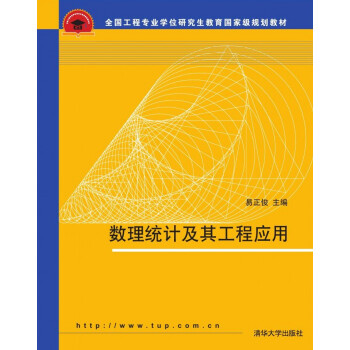
![原子物理学进展通论 [Advances in Atomic Physics:An Overview] pdf epub mobi 电子书 下载](https://pic.tinynews.org/11670793/551bb5dcN978e3e18.jpg)
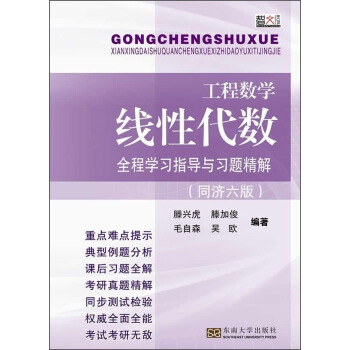

![代数几何入门(英文版) [An Invitation to Algebraic Geometry] pdf epub mobi 电子书 下载](https://pic.tinynews.org/10104501/d31acd0f-4d1f-4fad-9888-76407195e213.jpg)
![图像处理中的数学问题(第2版)(英文版) [Mathematical Problems In Image Processing:Partial Differential Equations and the Calculus of Variations] pdf epub mobi 电子书 下载](https://pic.tinynews.org/10104513/2d5b98ef-65cf-4574-ad7f-f2c23b9d545d.jpg)


